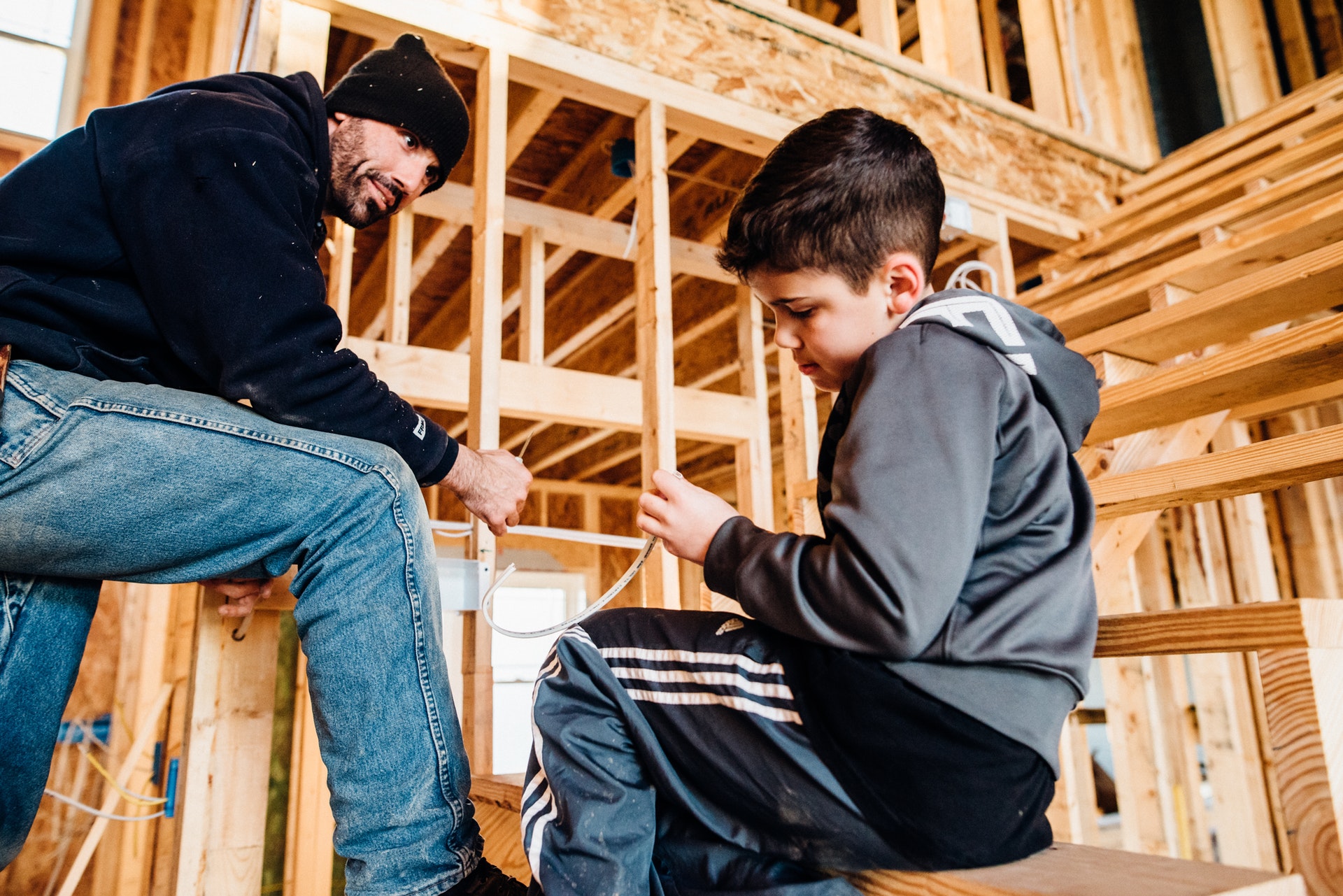
The Art of Listening Well
by Dr. Chris Bibby
BStrong Together Contributor
Parents often struggle with how to get their children to talk with them honestly about what they’re thinking and feeling.
Parents understandably want to know what’s going on internally with their children so that they can help meet their needs and make sure they are doing well, but also watch for thought-traps that we’re all susceptible to (e.g. perfectionism: “If I don’t get the right grade or do this task just right, it means I’m a failure.”).
Some kids don’t communicate a lot or communicate well when they do. They may not have the vocabulary for what they are feeling or have difficulty translating what they’re feeling into words (something we adults struggle with as well!). They may fear negative consequences to being honest and vulnerable. Or they may be trying desperately to avoid that most terrifying of childhood pain: embarrassment.
But listening is extremely important if we want to understand our children and at least have some idea of how best to help them.
Listening is a rare but precious art. It’s more than hearing words. It’s hearing people. Anyone can hear words. It takes skill to hear beyond the words, to truly understand the meaning behind them. It’s a small opportunity to connect a little deeper amongst our running day-to-day.
Here are a few tips to create a better connection with your child by becoming a better listener:
1. Decide to listen.
A helpful tip whenever you are trying to change a behavior is to make the decision to change the behavior and plan for it before the moment arises. Each time you want to be a better listener, make the commitment to be a better listener and re-focus.. Give yourself a moment to filter out external noise and remove distractions. Sharpen your focus. Like any new discipline, you have to re-train your brain to do something different before it comes naturally.
2. Listen to all of the words being said before you formulate a response.
Sometimes we know what our child is going to say before they finish. We jump in to reduce badgering, whining or other things that are difficult to hear. However, good listeners are open to hearing things they may not like because they know that receiving the message is important. You may have to call on other skills like saying “no” or an acceptance of not being able to fix a problem. But there is great value in creating space for a child’s thoughts. It sends the message that they matter, even when you don’t grant them their wishes.
3. Turn down the volume on your own intrusive feelings.
This is a big one (and worthy of its own blog). For now, I encourage you to be aware of uncomfortable feelings within yourself (like fear, anxiety, irritation) and turn them down to manageable levels. Your brain isn’t able to process information as effectively when it’s high on any particular emotion. Turn the volume down so your brain is better able to use its skills (like empathizing or conjoint problem solving).
If you have trouble doing this, you might try closing your eyes to reduce incoming stimuli so you’re more focused on the words. If your child suggests you aren’t listening, assure them your eyes are closed so that you may better hear them.
 4. Listen to behavior.
4. Listen to behavior.
Dr. Albert Mehrabian’s research suggests that only 7% of any message is conveyed through words, 38% through vocal elements, and 55% is conveyed through non-verbal elements (facial expressions, gestures, posture). 55%! If we’re not listening to non-verbals cues, we miss a lot.
You may notice your child fidgeting or derailing a conversation when talking about a particular subject. She may look at other things. It may be a slight shift in how she’s sitting.
When you think it will be helpful to the conversation, interpret this behavior by giving it words. This helps your child get their “hands” around it and better understand their own thoughts and feelings. For example, you could say, “I notice when I mention Mrs. Grayson, you start talking about what we’re doing this weekend. I wonder if talking about her makes you uncomfortable.”
It’s important that your observations are value-neutral and non-judgmental. Thoughts and feelings can be upsetting or even disturbing, but they aren’t morally wrong. They just are. We want to listen well so we have good data about our children. Children are extremely sensitive listeners. If they hear or sense you judging or disapproving of their thoughts and feelings, they’re more likely to start editing, which leads to bad data.
To be clear, this is not the same as mind-reading (a skill most of us lack). If you make an observation and your child denies it, learn when not to press a little more (for example, in the event that they’re not used to talking about a difficult subject) and when to let it go. If your interpretation is correct, it will show up again. You can gently circle back each time, communicating that you’re hearing her and that’s it’s safe to talk when she’s ready. By letting it go, you’re communicating that you’re open to a little give-and-take, which helps your child feel more safe and in control, which can lead to more open communication. Remember that we want her to develop these kinds of skills, after all, for when she’s in an uncomfortable, high-pressure peer situation.
Be open to being wrong, too. None of us get it right all the time (ask any married person!). That’s okay. The willingness to be open to trying again and listening better communicates cooperation that will lower defenses and increase the chances that you’ll get good data.
Listening is an art. It can open doors and put you on more solid ground as a parent. If at first you struggle with these skills, don’t worry. Most new skills take practice until they become part of our “programming.” Science is very clear that disciplines such as these actually re-wire your brain so that you’re able to make more thoughtful responses.
